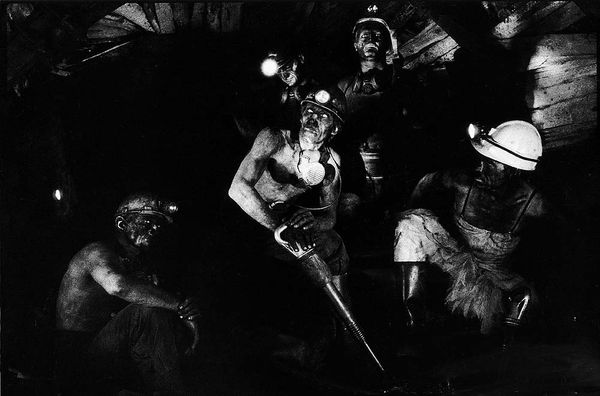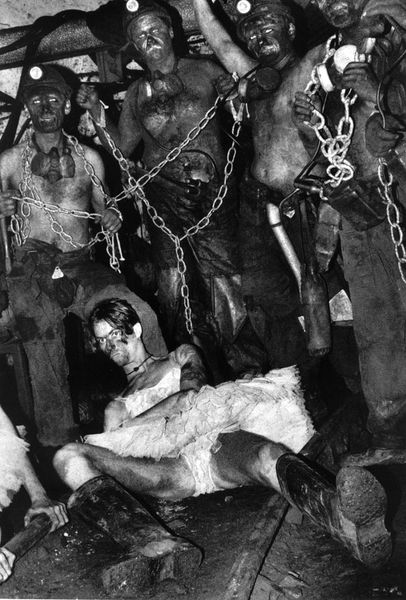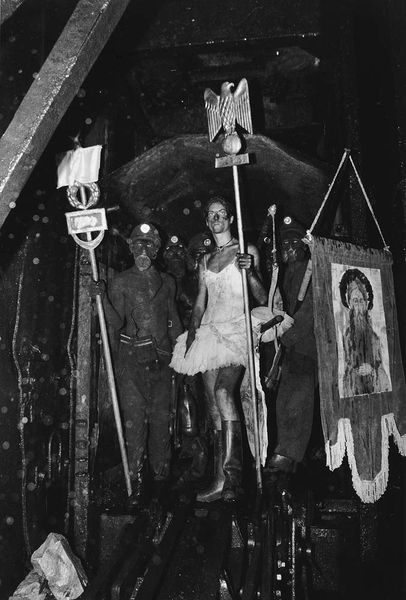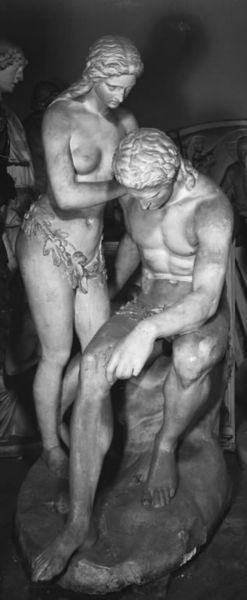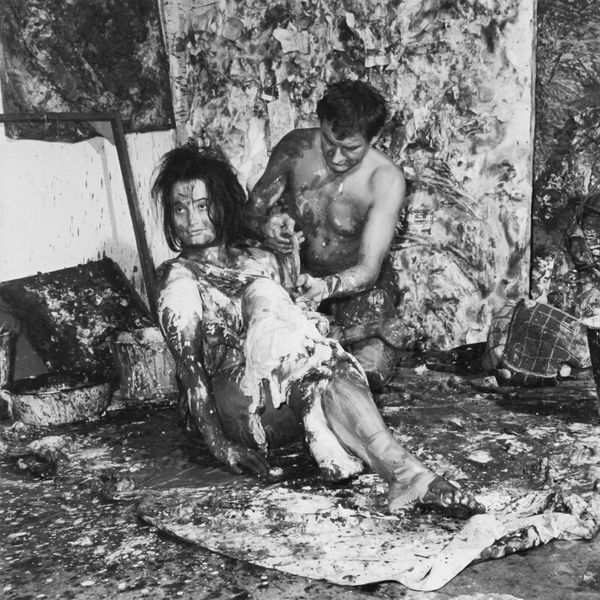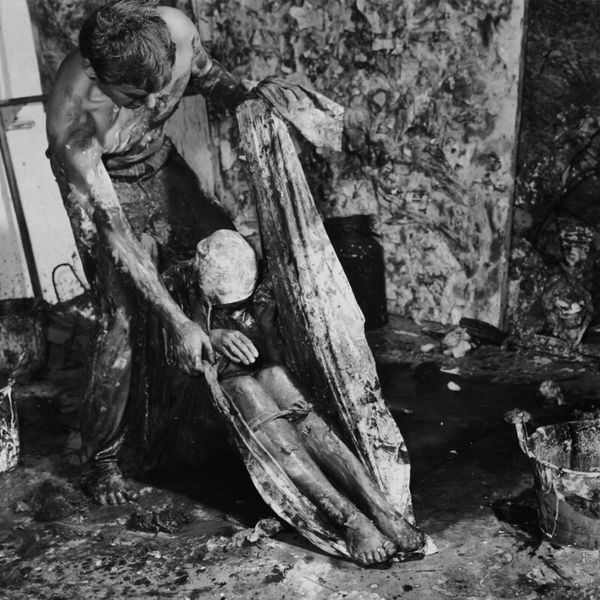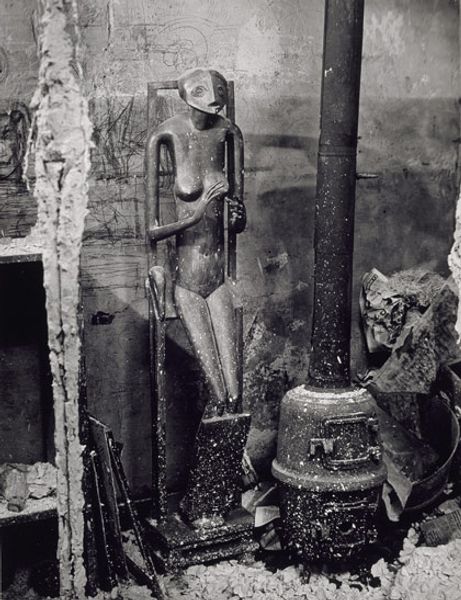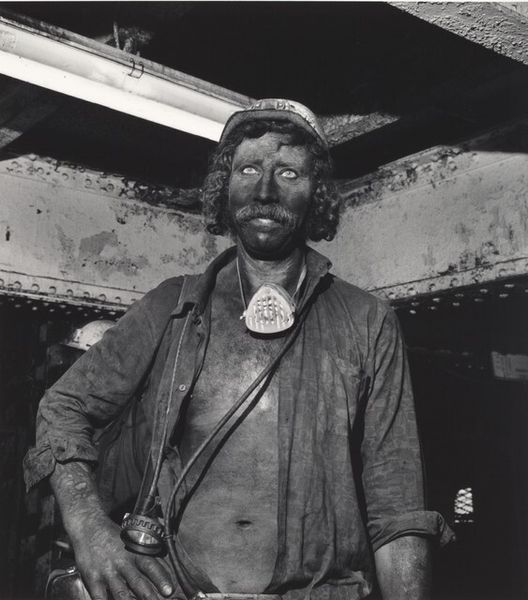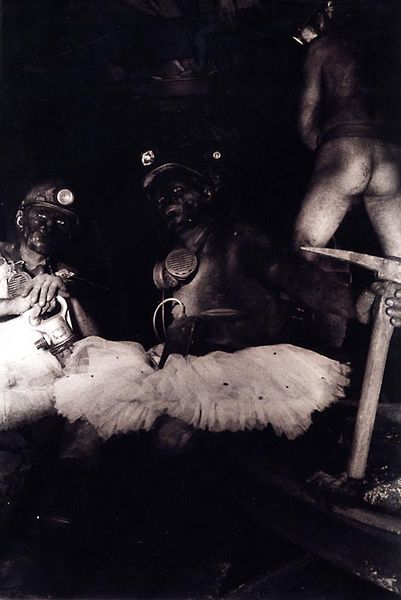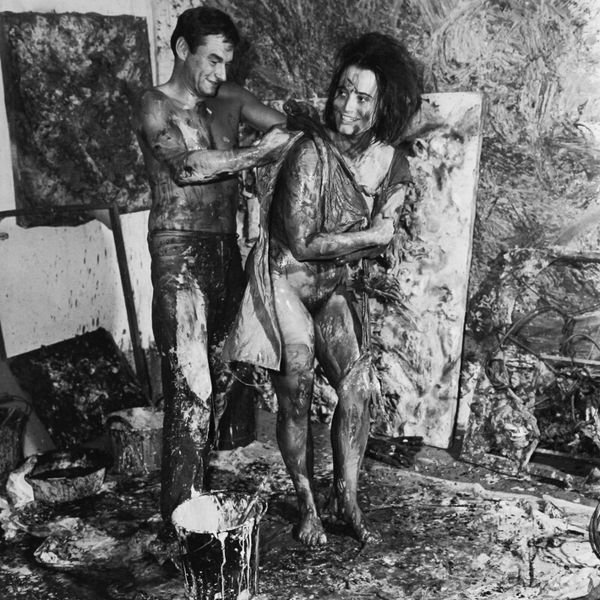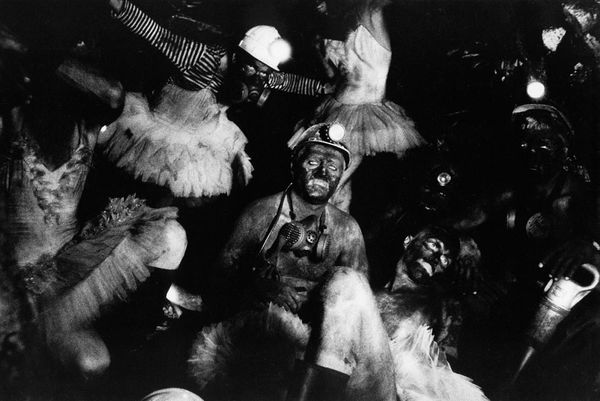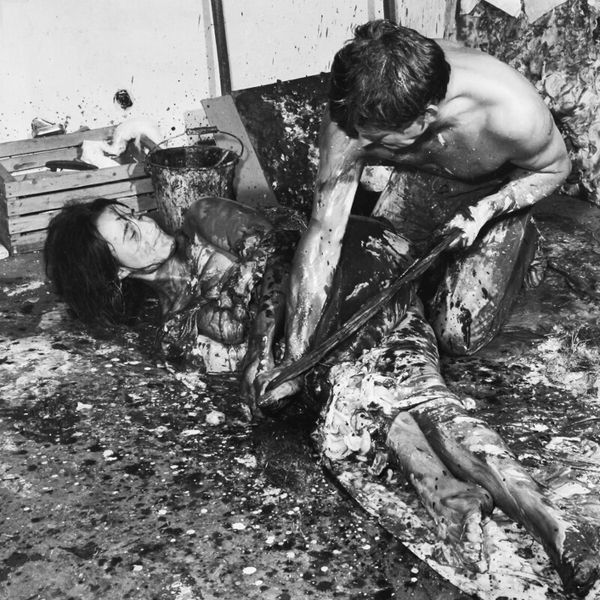
photography, gelatin-silver-print
#
portrait
#
contemporary
#
black and white photography
#
social-realism
#
photography
#
black and white
#
gelatin-silver-print
#
monochrome photography
Copyright: Arsen Savadov,Fair Use
Curator: Arsen Savadov's stark gelatin silver print, "Donbass Chocolate," was created in 1997. It's a rather unsettling, thought-provoking piece. Editor: My first impression is one of deep unease. The high contrast black and white amplifies the grittiness, and the combination of the figures' expressions with the skull creates an atmosphere of mourning and suppressed rage. Curator: The title itself, "Donbass Chocolate", offers a layer of irony. The Donbass region of Ukraine is known for its coal mines, a source of both wealth and hardship. Chocolate is sweet and luxurious, a stark contrast to the lives of the miners depicted. We see men covered in coal dust. The cultural history tells a complicated story here. Editor: Absolutely. And what immediately grabs me is the theatrical staging, which is heightened by what appears to be a ballerina cradling a skull. Considering labor exploitation, environmental devastation, and identity are recurring themes, this photograph functions as a profound sociopolitical statement, an intersectional message about precarity and loss in Ukraine’s mining region. Curator: I find it intriguing how Savadov uses a traditional medium, gelatin silver print, to portray such a contemporary subject. He merges social realism with elements that appear almost surreal. Do you read this work in relation to broader trends within the post-Soviet art scene? Editor: Absolutely. There’s a clear questioning of ideologies at play. The stark black and white feels reminiscent of earlier Soviet propaganda photography, but here, it's used to critique, not celebrate. The photograph reflects a collective identity caught between tradition and a painful, uncertain present. Curator: One can feel the influence of socio-economic realities within post-Soviet Ukraine through the composition itself. It's a far cry from any romantic notion of labor or industry that the Soviet era might have espoused. Editor: I completely agree. Savadov masterfully confronts us with a reality that’s both deeply personal and universally relevant, compelling the audience to examine the often-unseen human cost inherent within systems of production and consumption. Curator: Indeed, it provides a striking representation of a nation grappling with the echoes of its past and the challenges of its present. The image continues to stir important conversations about identity and power. Editor: A critical, thought-provoking piece; seeing this work helps me reflect on our connections and disparities.
Comments
No comments
Be the first to comment and join the conversation on the ultimate creative platform.
